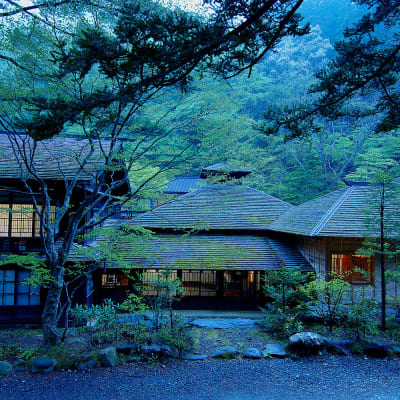©Miyama DMO
HOME > Japan’s Local Treasures > Miyama’s Thatched Village, Kayabuki no Sato
Explore Miyama’s thatched village, Kayabuki no Sato, with the help of local guides and get in touch with the villagers' everyday life
Kyoto Miyama Tourism Association

An ideal location for people who love Japanese culture and tradition, Miyama offers a variety of tours to enjoy. Located about 50 kilometers north of Kyoto, Miyama extends over an area of approximately 340 square kilometers, 96% of which consists of forests, and comprises several villages. In any of them you can spot “kayabuki no ie” (thatched roof houses), but nowhere is the density of these traditional homes larger than in Kayabuki no Sato.
Although Kayabuki no Sato (literally “Thatched Roof Village”) is a National Heritage Site, the thatched roof houses in this area are all private dwellings belonging to Miyama residents. As you walk through the village, you may feel the delight of hearing voices calling out to one another or the sounds of the kitchen—in other words, the sounds of everyday life in Miyama.
One of the popular tours is the Thatched Village Guided Walk, where English-speaking local guides show you the main sightseeing spots in the village. The tour brings the opportunity to ask locals about the way of life in Miyama.

How to get there
From Kansai International Airport, take the Haruka express train to JR Kyoto Station (about 1 hour 30 minutes), then take the San-in Main Line to JR Sonobe Station. Transfer to a train bound for Fukuchiyama or Goma and ride to JR Hiyoshi Station (about 10 minutes). From Hiyoshi Station, board the Nantan City Bus and ride to the Kita (Miyama Kayabuki no Sato) stop (about 50 minutes).
Kita, Miyama-cho, Nantan-shi, Kyoto-fu



























































